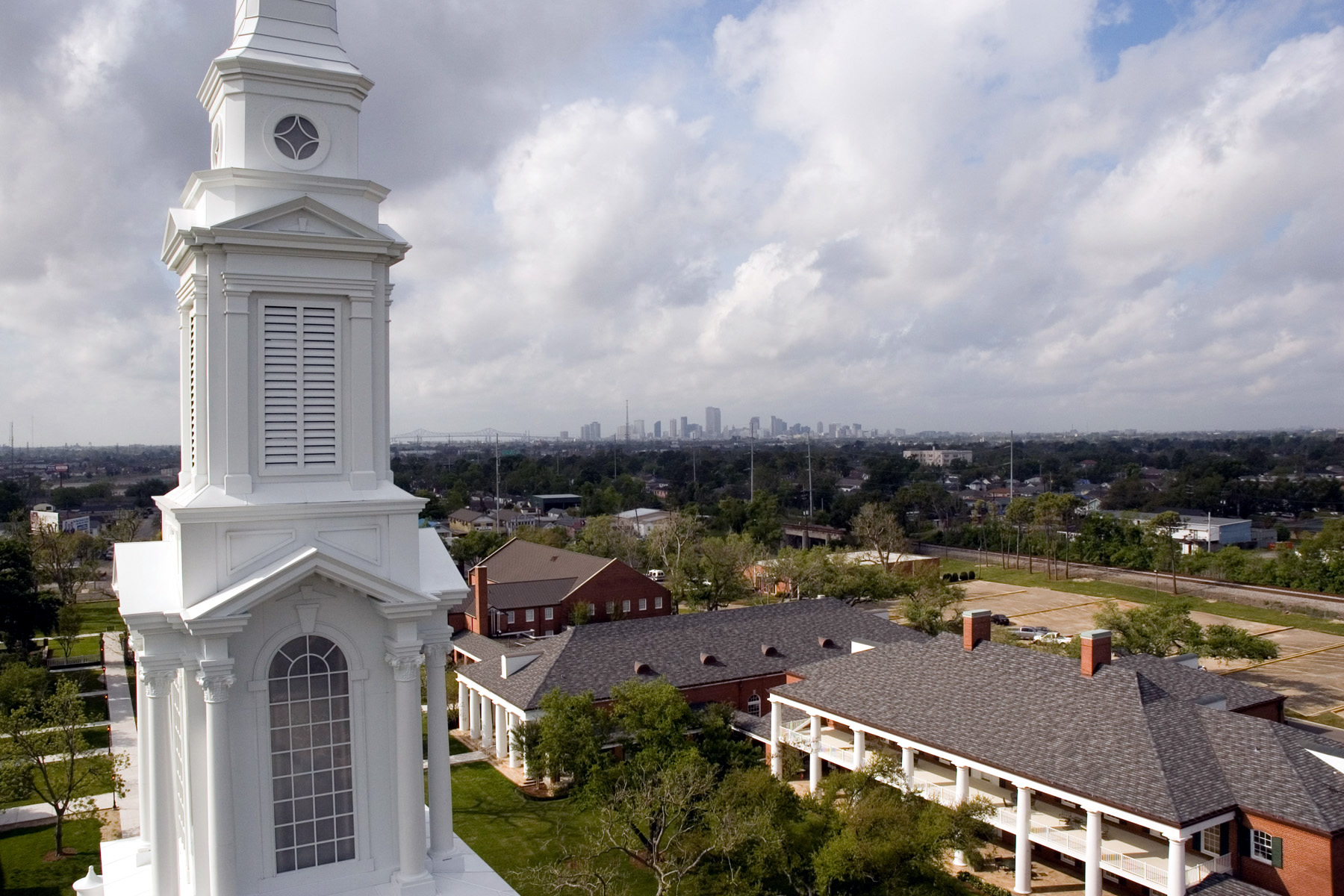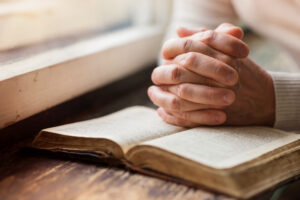
NEW ORLEANS (BP)–The steeple that served as a beacon of hope in the city of New Orleans following Hurricane Katrina once again graces the top of New Orleans Baptist Theological Seminary’s Leavell Chapel.
Workers from Kentucky-based Campbellsville Industries completed the installation of the new steeple on March 29, 19 months to the day after Hurricane Katrina. The three-day installation process culminated with the placement of the 46-foot spire, and a small crowd of seminary students, professors and staff members cheered as the crane operator gently eased the last section into place.
In the days following Hurricane Katrina, seminary officials worked diligently to restore power and illuminate the steeple. Their desire was to offer a symbol of hope in a hurting city. In October 2005, the illuminated steeple provided the lone point of light in a sea of darkness — the only light for miles.
While the aluminum-clad steeple suffered only minor external damage, Katrina weakened the internal steel structure. Last July, seminary officials opted to remove the steeple and replace it with a new one.
“During the darkest hours in the aftermath of Hurricane Katrina, the steeple shining in the night was a beacon of hope, a reminder that God had a future for us,” Chuck Kelley, president of the seminary, said. “To have that steeple back in place shining in the night once again is a reaffirmation that that future has started.”
Stretching 170 feet above the New Orleans Seminary campus and visible from points throughout the city, the steeple gives testimony that the city is slowly recovering. And for the seminary family, the steeple is an enduring witness of hope rooted in Jesus Christ.
The new steeple is an exact visual replica of the original steeple which was patterned after the steeple of the first Baptist church in America, First Baptist Church in Providence, R.I. The internal design, however, is much stronger than the original. It features an improved structure which meets Louisiana’s post-Katrina wind load standards.
Workers also repaired the steeple’s broken clock, which stopped working years ago, and replaced the broken carillon. The chimes were given several practice sessions April 2 and 3 with tunes that included the New Orleans Seminary alma mater and other hymns. Kelley said that the carillon primarily will be used to celebrate special occasions.
Before the spire was added atop the three other steeple sections, Kelley inscribed the interior with a short note that described the increased significance of the steeple following the storm.
“After Katrina, the only light between downtown N.O. and Slidell was this steeple,” Kelley wrote. “May it ever be a beacon of hope! Jeremiah 29:11.”
In many ways the steeple’s return marked a symbolic conclusion to the seminary’s reconstruction efforts following Hurricane Katrina. The campus is once again full of life and most of the restoration projects are complete or nearing completion. In most cases, seminary officials chose to make significant upgrades on campus.
“The reconstruction process has just been a miracle of God,” Kelley said. “With the help of our outstanding contractor, Mr. Mike Moskau, we have been able not simply to repair what was broken, but to improve the entire campus along the way.”
Among the improvements are remodeled and updated dormitory rooms, new windows for older apartment buildings, improved roads, new raised sidewalks, improved sidewalk lighting and additional benches along sidewalks.
The complete update to the men’s and women’s dorms includes upgraded electrical wiring and a new heating and air conditioning system.
The new raised sidewalks that weave through the campus are essential in the area’s humid subtropical climate. Before Katrina, frequent afternoon rains that are so common in New Orleans left campus sidewalks covered with puddles. Now, rain water quickly drains off the raised sidewalks.
Lighting also was an issue before Katrina. The old lighting along sidewalks has now been replaced with New Orleans-style lampposts, which provide improved visibility at night with a design that compliments the French Colonial architecture so prominent on the campus.
A few restoration projects are still underway. Work continues on the campus gym and swimming pool, and the construction of the new operations building is on-going. All three projects will include significant upgrades and improvements.
–30–
















